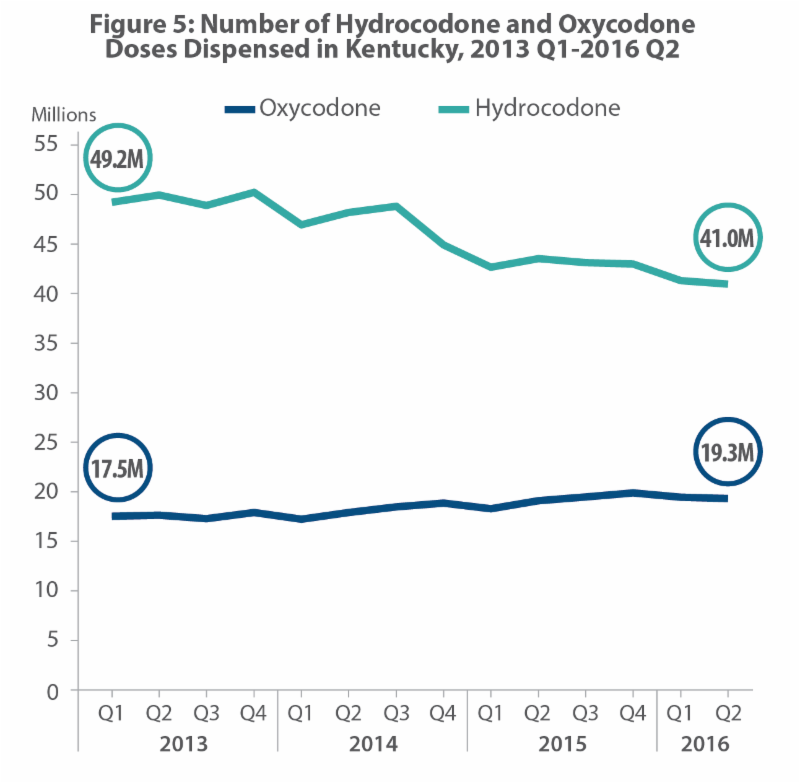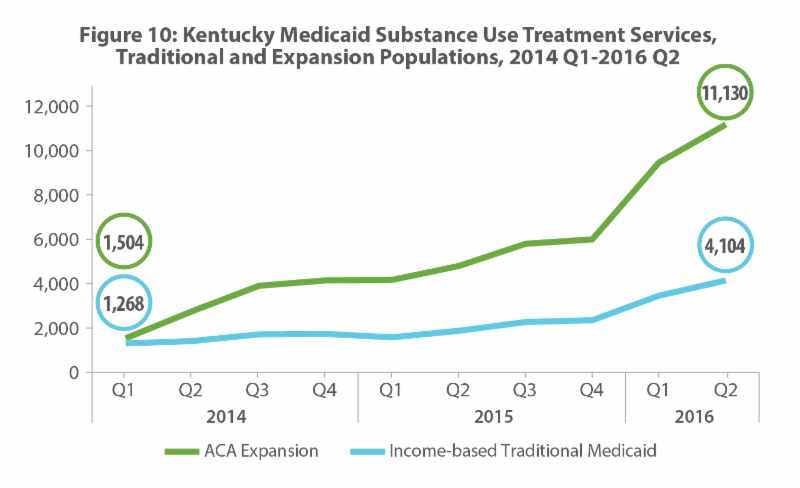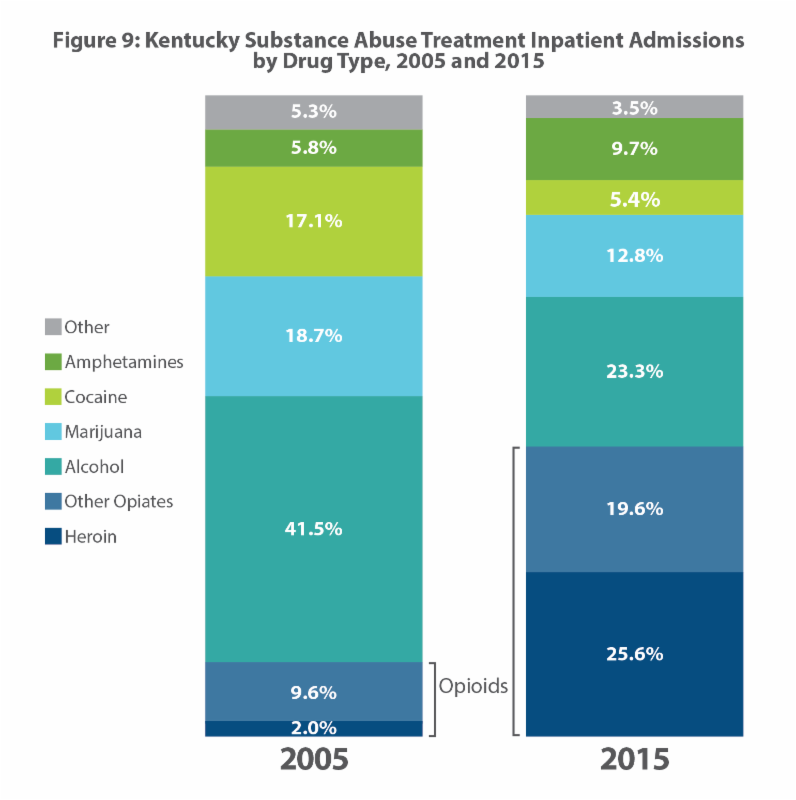Treatment services for substance use increased by 740 percent for Medicaid expansion beneficiaries over the 30 months from the beginning of 2014 through mid-2016, according to a report released today by the Foundation for a Healthy Kentucky.
The expanded Medicaid program in the Commonwealth under the Affordable Care Act (ACA) covered approximately 11,000 substance use treatment services in the second quarter this year, compared to about 1,500 in the first quarter of 2014.
The report suggests that expanded Medicaid eligibility in Kentucky under the ACA, as well as other elements in the health law, have helped increase access to substance use treatment in the state.
Rising Kentucky rates of prescription opioid and heroin abuse, however, are also likely to have played a role in the growth of several types of treatment for substance use in the Commonwealth, the report said.
“ACA provisions that allowed Medicaid expansion in Kentucky and required most health insurance plans to cover substance use treatment are helping ensure that more people with drug and alcohol disorders have access to the treatment they need,” said Ben Chandler, president and CEO of the Foundation.
“But expanded access to treatment is just one part of the solution to the growing problem of opioid abuse in Kentucky and across the nation.”
The report, Substance Use and the ACA in Kentucky, is the latest data release from the Foundation’s ongoing study of the impact of the Affordable Care Act (ACA) implementation in Kentucky.
Kentucky was one of the earliest and hardest-hit states in the national opioid epidemic, and the report confirms that the problem continues to grow in the Commonwealth.
While overall inpatient admissions for substance use treatment in 2015 (19,005) were down from 2005 (22,705), heroin and other opioids accounted for nearly half (46.2 percent) of those admissions in 2015. That compared to just 11.6 percent in 2005, the report said.
The report also found that doses of buprenorphine, a medication that doctors can prescribe as part of treatment for opioid addiction, rose from 2 million in the first quarter of 2013 to 3.5 million in the second quarter of 2016.

Number of bupenorphine doses dispensed in Kentucky between the first quarter of 2013 and the second quarter of 2016 (click to enlarge).
According to the Kentucky Office of Drug Control Policy, 67 Kentucky counties had overdose death rates of more than 20 per 100,000 people in 2015, up from 64 counties in 2014.
Just nine counties nationwide had overdose rates that high in 2000.
While prescriptions for hydrocodone, the most commonly prescribed opioid painkiller, are declining in the Commonwealth, the state is now seeing an increase in deaths related to heroin. Last Friday, the Centers for Disease Control and Prevention released data for 2015, which showed that heroin related deaths increased 20 percent nationwide over 2014.
“Research has found that people often progress from using prescription opioids to heroin because it provides stronger effects, is often less expensive than prescription opioids, and may sometimes be more readily available,” the report states.
The move to heroin also may be a response to efforts to make prescription painkillers harder to obtain and abuse.

Chart shows the number of Hydrocodone and Oxycodone doses dispensed in Kentucky between the first quarter of 2013 and the second quarter of 2016 (click to enlarge).
In 2012, before the ACA, approximately 585,000 Kentuckians lacked coverage for treatment of drug and alcohol disorders because they had no health insurance. The health plans that covered an additional 326,000 Kentuckians weren’t required to cover these treatment services, and plans that voluntarily covered the services often had strict limitations.
Since the ACA, Kentucky has extended coverage for at least some services to 635,500 non-elderly traditional and expanded Medicaid enrollees.
“Medicaid expansion has been particularly important to young adults, who have both the highest rates of substance use, as well as the highest rates of uninsurance,” Chandler said. “Since the state expanded Medicaid coverage to those with incomes up to 138 percent of the poverty level, more than 100,000 Kentuckians ages 18 to 25 have gained coverage that includes substance use treatment services. Gov. Bevin’s plan to reform Kentucky’s Medicaid program through an 1115 waiver, if approved as expected under the new administration, will retain this substance use treatment coverage.”
A copy of the report is available here.
Other reports from the Foundation’s Study of the Impact of the ACA Implementation in Kentucky are available here.
Since the Foundation for a Healthy Kentucky opened its doors in 2001, it has invested more than $26 million in health policy research and pilot project grants across the Commonwealth. Funded by an endowment, the mission of the nonpartisan Foundation is to address the unmet health care needs of Kentuckians
Additional information from the Foundation for a Healthy Kentucky is available here .
Foundation for a Healthy Kentucky


















